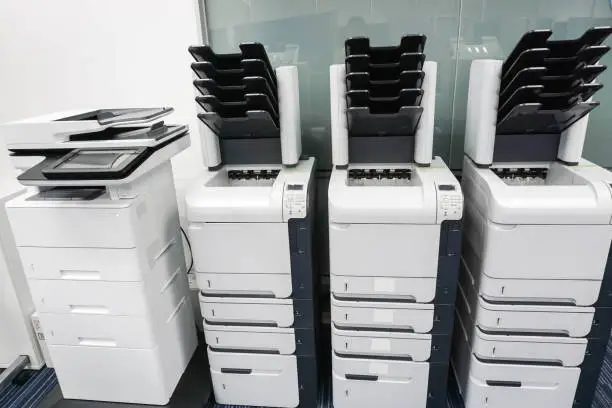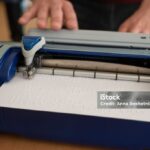Now Reading: Best Fabrics for DTF Printing: What Works and What Doesn’t
-
01
Best Fabrics for DTF Printing: What Works and What Doesn’t
Best Fabrics for DTF Printing: What Works and What Doesn’t

One of the most fundamental elements that contributes to the successful completion of DTF printing jobs is the fabric type. The DTF technology is quite adaptable and it can adapt to a lot of materials, but this does not necessarily mean that any fabric will do the job. This article aims at outlining the most appropriate fabrics for DTF printing, what is effective, and what should be avoided to ensure that prints are eye-catching and durable at the same time.
Best Fabrics for DTF Printing
- Cotton
Out of all the fabrics used for DTF printing, cotton fabric seems to be the best option. Cotton’s organic fibers absorb the ink proficiently which results in bright colors with a smooth effect. Due to their good washability and durability, cotton t-shirts and cotton hoodies are the most suitable options for DTF prints. However, 100% cotton fabric should be used for the best results since blends do not stick as well.
- Polyester
Polyester is also a good candidate for DTF printing. Its properties of not fading nor shrinking make it suitable for clothes to be worn during sports, or in greater outdoor conditions. In fact, while polyesters may not need an overly large amount of print, the brightly colored polyesters tend to be brighter than all other colors of cotton fabric. But ensure that the polyester substrate has a proper finish, lower finish polymer substrate will affect the quality of the print.
DTF Transfer vs. Screen Print Transfer: Which Method is Best for Your Custom Apparel?
- Cotton-Poly Blends
Cotton-poly blends are a perfect combination of soft cotton and strong polyester which makes them easy to wear and long-lasting. The distribution if these fabrics incorporate nicely into DTF printing and can often be seen T-shirts and hoodies. The blend is great because it means that the fabric has good colour and wash resistance which is a reason why these garments are favored by myriad swimmers looking for customization opportunities.
- Canvas
DTF printing does look good on canvas fabric, particularly with bags and accessories. The strong two-ply construction allows for bright prints and durability features. Since canvas is tough, it can be used for handbags, backpacks, and shoes. Just make sure to pre-treat the canvas fabric for DTF for the best possible adhesion..
- Non-Woven Fabrics
The non-woven fabrics which are mainly used for banners and promotional giveaways could also be ideal for DTF printing. They are ideal materials in which decent design can be printed and they are light and easy to work with. On the other hand, the durability of the print can be affected by the type of non woven fabric, if any, which is applied, thus tests should be made before large quantity orders.
Fabrics to Avoid for DTF Printing
- Silk
Silk appears to be attractive options because of its comfortable texture but is not appropriate for DTF printing. The silk natural fibers do not respond positively to heat and pressure and damage the fabric and the print adhesion, for instance. In such silk products, consider other printing options, such as screen printing or embroidery.
- Low-Quality Polyester
High-quality polyester fabrics are perfect for DTF printing,however, low-quality polyester is not ideal as it produces poor print output. It is quite possible that fabrics that are glossy or have a rather low-end feel may not get a good feel of the ink resulting in either faded feeling prints or prints which get easily scraped off. High quality polyester fabric should always be the choice for anyone aiming at achieving the best prints.
- Spandex or Lycra
Fabrics that have a high spandex or lycra content are not suitable for DTF printing. The stretch properties of such materials may lead to warping during the heat transfer process, resulting in a poor print or damaging the design. If you want to print on stretchable fabrics, such type of fabrics should be used with other techniques developed for elastic materials.
- Treated or Coated Fabrics
DTF printing may not be compatible with fabrics that have been chemically treated or coated with substances for stain and water resistance, such as polymers. Ink adhesion is likely to be affected by such coatings, leading to distorted prints that wash off or peel off. For any materials that have undergone treatment, it is important to verify the fabric specifications and carry out some tests prior to their utilization.
Conclusion
The look and the quality of the prints are determined in large part by the type of fabric that is used which makes it important to select the right fabric to get the best results. Cotton, polyester, cotton-poly blends, canvas, and non-woven fabrics are excellent choices that can produce stunning prints. However, as a rule, one should stay away from silk, bad polyester, spandex and treated fabrics if they want their outputs to last as well as look good. By using appropriate materials, you will enhance DTF printing projects for patrons and enhance the quality of fabrics and accessories that customers will order.



































